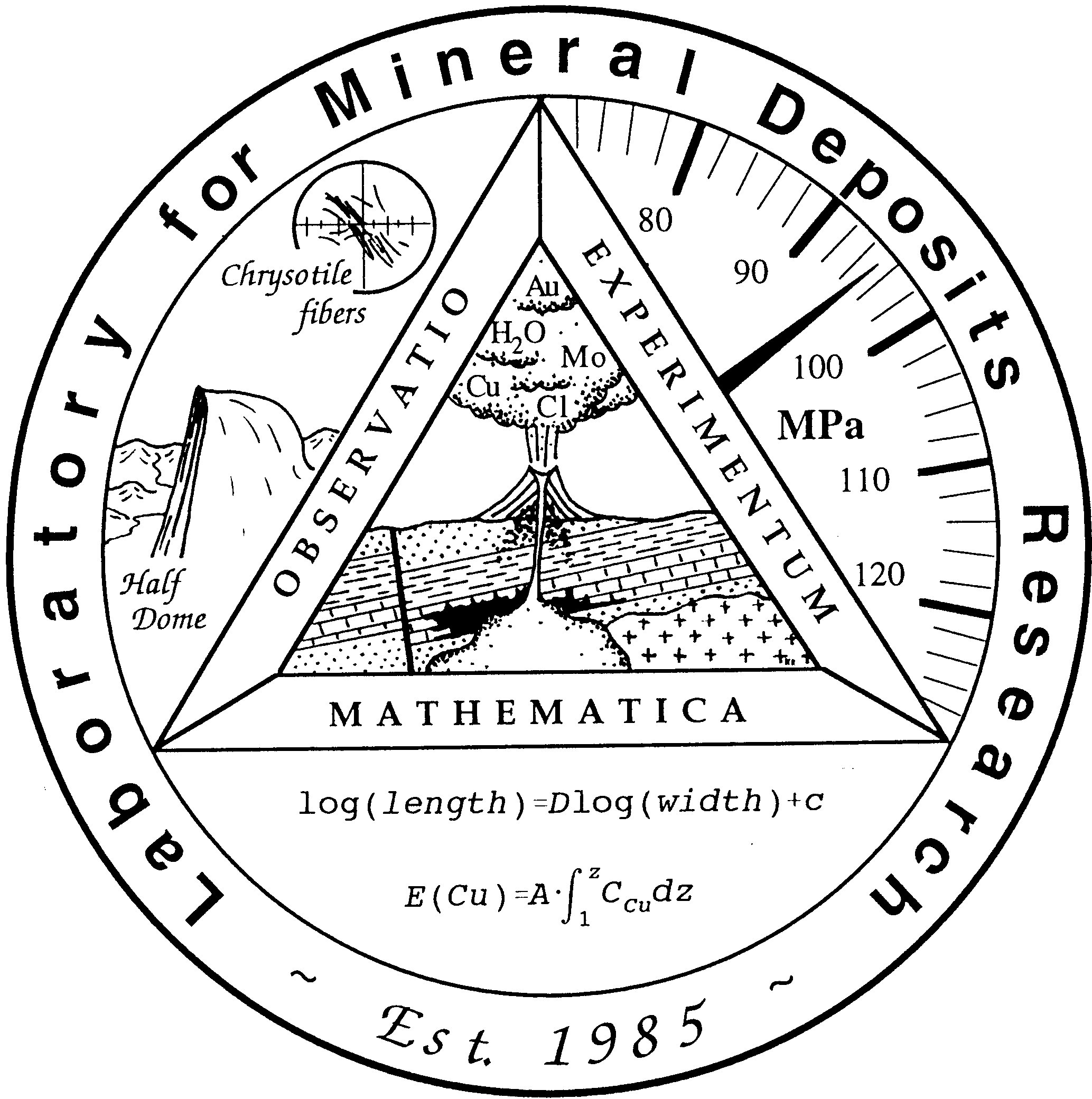|
|
||
 |
AcknowledgementThis work would not be possible without the support of the National Science Foundation, the Department of Geology, and the University of Maryland. |

Facilities
The core facilities of the LMDR include a fully functioning hydrothermal experimental lab, a wet chemistry lab, an optical/diamond cell lab, and a sample preparation laboratory.
The Hydrothermal Laboratory is a well equipped high-temperature, high-pressure experimental laboratory and includes a 100 MPa gas intensifier (Tem-Pres, Inc.), 5 kbar gas intensifier (Leco, Inc.), 1000 MPa gas intensifier (Harwood Engineering, Inc.), 1000 MPa-1400oC internally heated gas pressure vessels (Yoder design), multiple Rene '41, Inconel, and Stellite 25 cold-seal units (Tuttle type), four TZM vessel plus appropriate furnaces, one-atmosphere platinum wound quench furnaces for mixed gas, controlled atmosphere work, multiple 1/2" inner diameter rapid quench cold seal pressure vessels (Rene and Waspaloy), 12 Kanthal/Nichrome wound tube furnaces, of various ID's; most are multiply wound for temperature gradient control; we also have multiple clam shell type furnaces. Appropriate glass blowing and welding facilities are also present.
The Wet Chemistry Laboratory contains materials routine in wet chemcial preparation and analysis, a Corning/Barnsted water still for (double) dionization and distilaltion, a fully equipped Leitz research polarizing microscope including an MPV system for the analysis of fluid inclusions, a Pekin Elmer atomic absorption spectrophotometer (Model 238) with graphite HGA-400 graphite furnace, and appropriate (micro) pH+ and pK+ meters, all to support the preparation of experimental starting materials, and the analysis of run products.
The Optical Microscopy/Diamond Cell Laboratory contains a variety of research-grade microscopes for use in transmitted and reflected light microscopy, and four hydrothermal diamond anvil cells (HDAV) with appropriate video equipment to record experiements.
The Sample Preparation Laboratory for the LMDR contains an extensive catalog of experimental starting materials and over 1000 synthetic and natural specimens donated by the USGS for use in experiements, appropriate research balances, sample mounting and polishing equipment, and a research library.
Also Available
A variety of ofther equipment is available for use to members of the LMDR.
A JEOL 8900 Superprobe Electron Probe Microanalyzer (EPMA), purchased with funding from the National Science Foundation and the Department of the Army, is located in the NISP Laboratory. The EPMA is equipped with 5 WDS spectrometers (detection of elements Be-U), an ultra-thin window EDS system (B-U), and an Oxford (Gatan) mini-CL detector. The system has a high-precision, high-speed large sample stage optimized for mapping large areas (this section-size), and for automated point analyses. The EPMA, whose operation is overseen by P.Piccoli, is routinely used to analyze solid run products from our experiments.
In order to analyze trace metals in solid run prodcuts, we use the Plasma Mass Spectrometry Laboratory under the direction of Prof. Bill McDonough. Two laser ablation systems and Aridus desolvating nebulizer systems are connected to a ThermoElectron Element 2, a single collector instrument, which allows for the quantification of metal concentrations in run products down to the ppb range.
As part of our protocol to analyze experimental fluid inclusions, we have developed a fruitful collaboration with Chris Heinrich and other members of the Ore Deposits Research Group at Eidgenössische Technische Hochschule Zürich (ETH). As part of this analysis, an excimer ArF laser (193 nm) is used to ablate sample material (craters of 5 - 100 microns in diameter) which is analyzed by using an Elan6100 DRC quadrupole ICP mass spectrometer.

